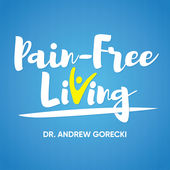
I was recently having a conversation with a physical therapy
assistant who works in a local well meaning, yet very
“conventional,” physical therapy practice. Since coming to work
with us as a patient, we have had many conversations discussing
the principles, strategies, and techniques behind treatment, based
on an Applied Functional Science approach(which all of our
therapists are Fellows of Applied Functional Science). One
such discussion
occurred recently when she asked, “Can you help me understand
why ‘balance / stability training’ was included as part of the
treatment plan for my SI pain Diagnosis?” The discussion that
followed highlighted some of the misconceptions surrounding
balance rehabilitation and training, and hopefully helped provide
a better understanding of balance as an integral part of all
function. Our patient had become accustomed to seeing static
testing on the ground, or on a less stable surface, as a common
way to determine whether or not an individual had “good
balance.” Unfortunately, someone who may do well standing on
one foot with their eyes closed for a predetermined period of time
may stumble or fall when turning to look at who just called his / her
name while he / she was walking. Though commonly used, these

traditional, static tests
provide limited information when the
fundamental truths about balance are understood. Balance is
dynamic and three dimensional. It is our body’s ability to integrate
the information from all of our body systems during a functional
task and use that information to displace our center of gravity. The
system must then decelerate that motion and either bring the body
back or, more likely, move in a completely different direction. Three
of the main systems that feed the body information are the
vestibular system, the visual system, and the proprioceptive
system. Though there is a minimal amount of information
generated to those systems in a static position, it is motion
that truly “turns on” and feeds these systems the information
required for function. Balance requires the ability of the
neurological system to successfully receive information, process
that information, and then convey an appropriate motor plan for
task completion – all while controlling the center of mass against
gravity. Balance requires range of motion and strength.
If a body segment lacks motion, then not only do accommodations
of additional motion in other areas need to be made to complete a
task, but proper muscular loading and exploding at the restricted
joint cannot occur. Balance can be impaired if the surrounding
musculature is unable to control movement into
that motion (unstable), even when full passive range of motion is
available.

Most importantly, balance requirements are determined by the
functional task the body is being asked to perform. In order to
insure successful task completion, the individual should be able to
control three dimensional motion beyond that required of the
functional task. Balance rehabilitation and training programs
should reflect that goal. The physical therapy assistant that was
currently being treated happened to be an avid walker and was
unable to do so due to her SI pain. As it turns out she had been
receiving traditional physical therapy for almost 9 months focusing
on hip alignment and core strength. The real dysfunction was
down in her right foot.
The foot had created so much stability due
to her poor balance that it “locked up”. Well the locked up foot was
transmitting way to much force up to her hip and causing hip
alignment issues and ultimately SI pain. If we did not address the
stability after the mobility she would end up having a locked up
foot again. So this was a great experience for her and us as we
were able to spread the new innovative information as it relates to
Applied Functional Science. If you are interested in hearing more
about how stability and balance effect our SI joint and lower back
please check out our next workshop by clicking here for more
details .
P.S. I also wrote an ebook called "The Truth About Low Back Pain- The Hidden Culprits" and you can have it free by clicking here




